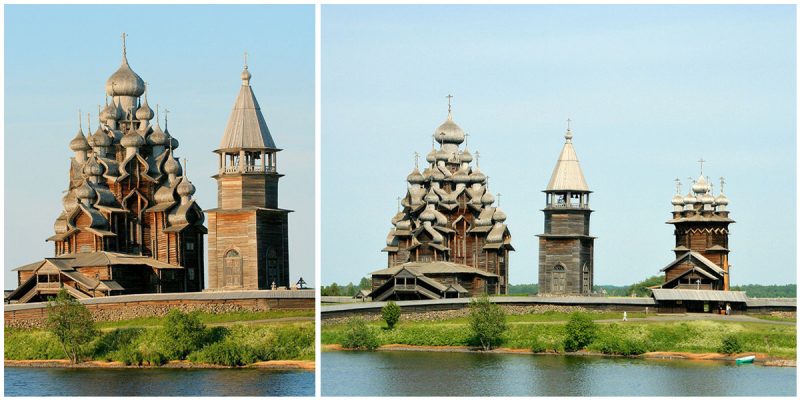Russia’s Kizhi island is popular for many historical wooden buildings that were moved to the island from various parts of Karelia for preservation purposes during the 1950s. Today, the entire island and the nearby area form a national open-air museum with more than 80 historical wooden structures.
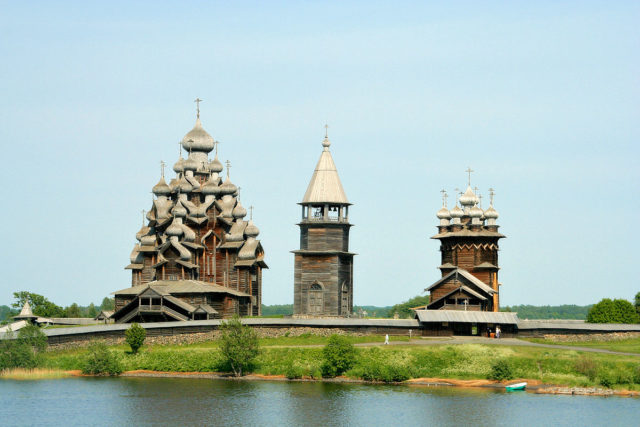
The most famous among them is the Kizhi Pogost. It is a gorgeous UNESCO World Heritage site that contains a trio of ornate 18th-century church buildings made entirely of wood.
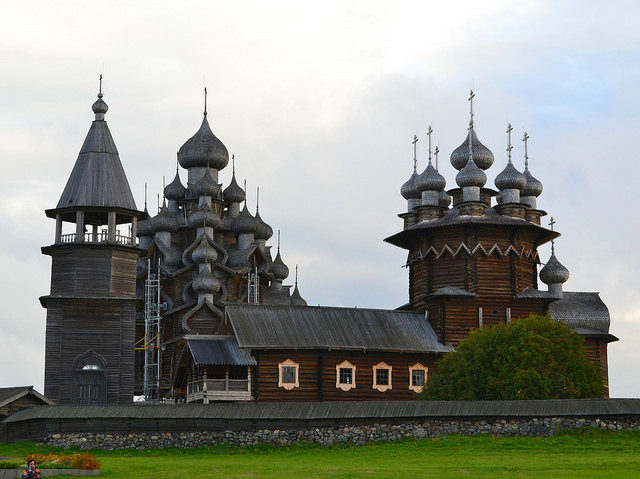
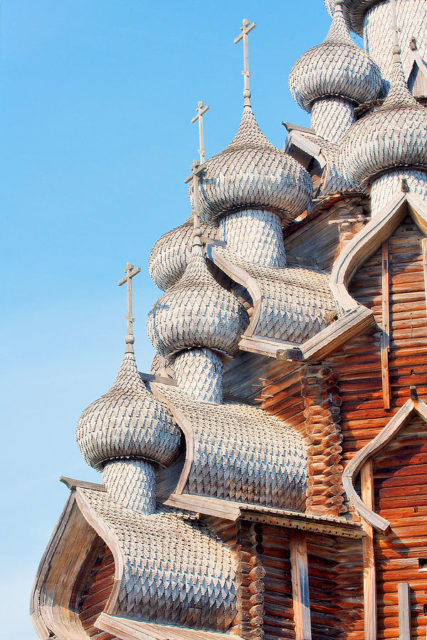
These unusual constructions, the two wooden churches (the 22-dome Transfiguration Church and the 9-dome Intercession Church) and the octagonal clock tower, in which carpenters created a bold visionary architecture, perpetuate an ancient model of parish space and are in harmony with the surrounding landscape.
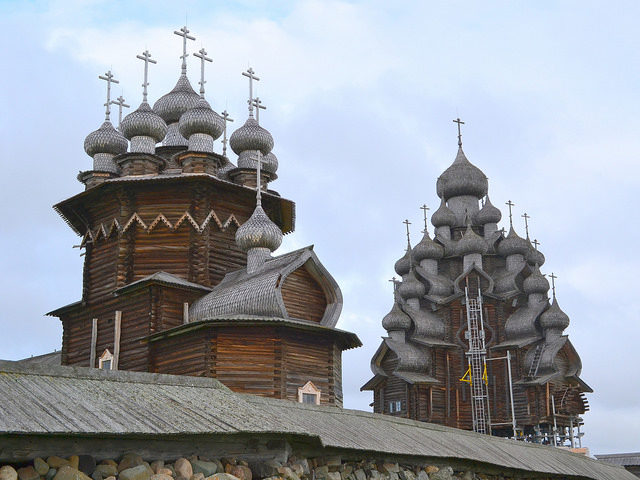
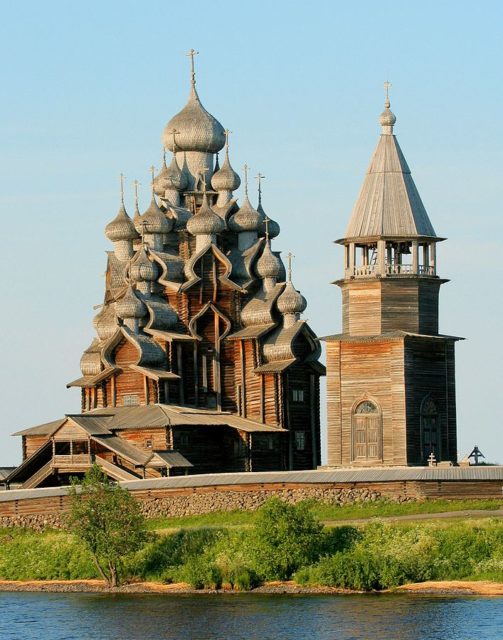
The Church of the Transfiguration of Our Lord is the most famous and outstanding construction of the whole ensemble. It was built in 1714 on the site of the old one, which was burnt down by a lightning strike. It is the most ornate, featuring 22 domes and reaching 121 feet in the air. Many thousands of logs were brought for construction from the mainland, a complex logistical task in that time. It was built according to the best Russian carpentry traditions — without a single nail.
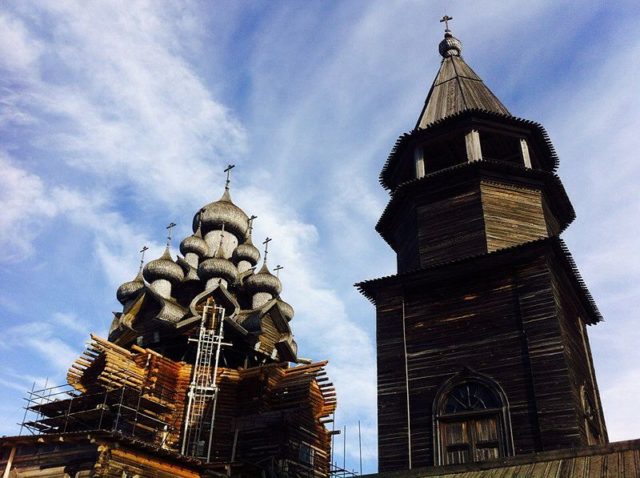
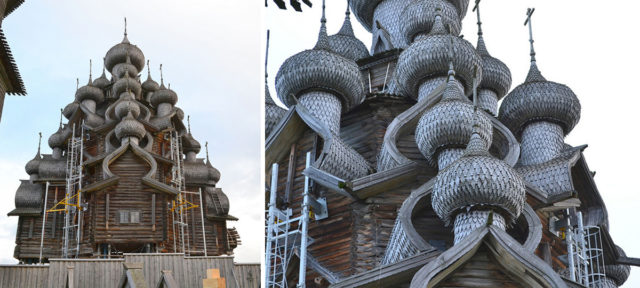
A legend tells that the main builder used one axe for the whole construction, which he threw into the lake upon completion, with the words, “there was not and will be not another one to match it”.
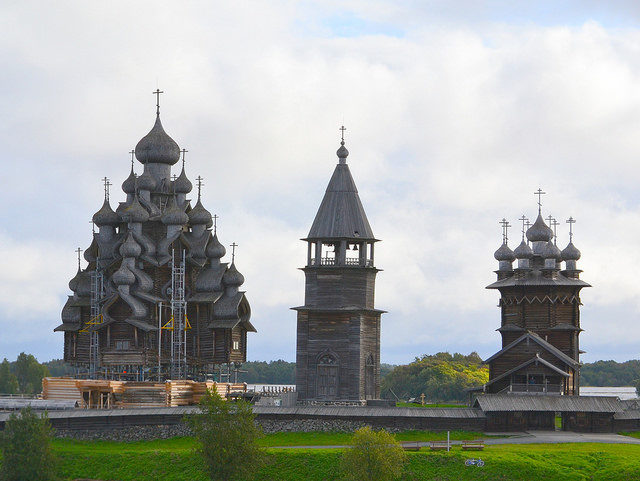
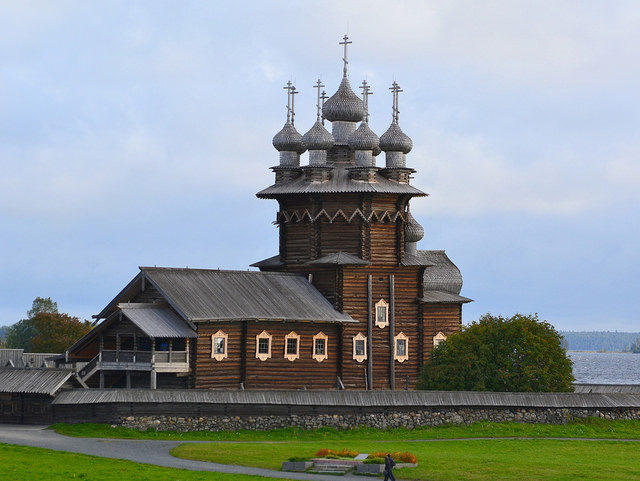
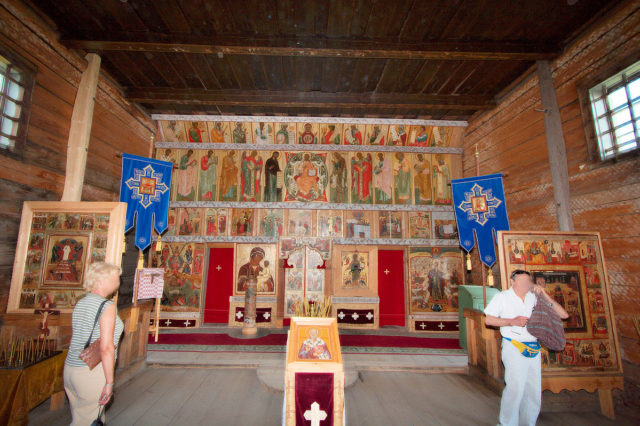
The Church of the Intercession was built in 1764, providing an admirable visual complement to the ensemble. This impressive nine-domed church 105 feet tall and church sit comfortably as one of the taller wooden structures in the world. Eight domes of the Church of the Intercession surround the ninth, central one.
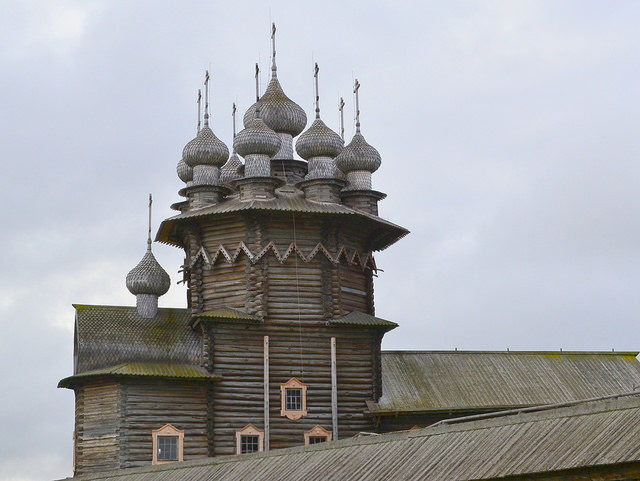
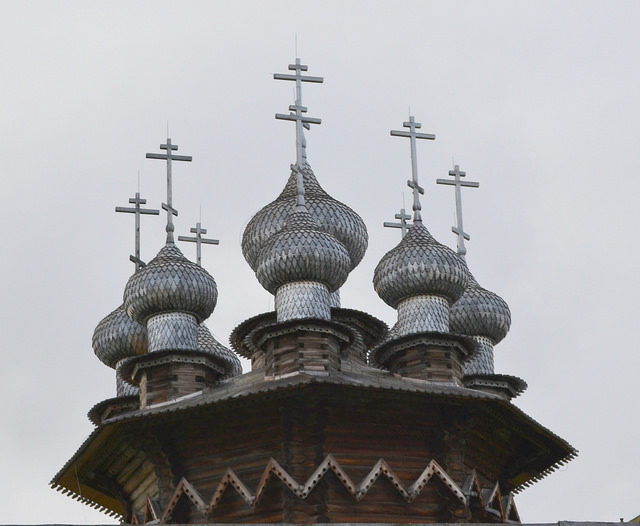
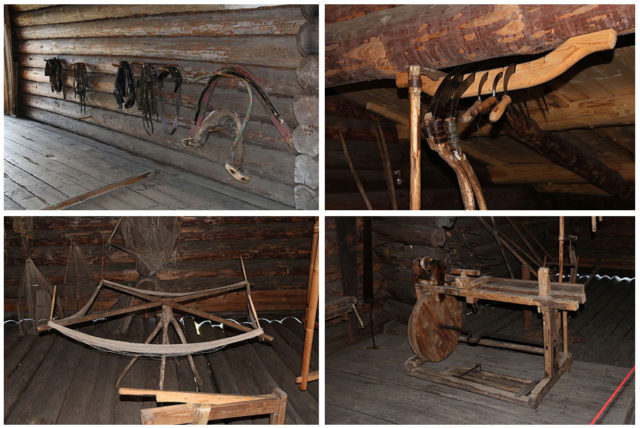
The original bell-tower rapidly deteriorated and was re-built in 1862, and then further restored in 1874 and 1900. Starting in 1929, bell-ringing was prohibited throughout the Soviet Union, and the bells of the Bell Tower remained silent almost 60 years, until 1989. Nowadays, there are twelve active bells in the Bell Tower of the Kizhi Pogost: nine old and three modern.
